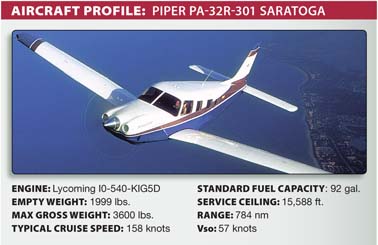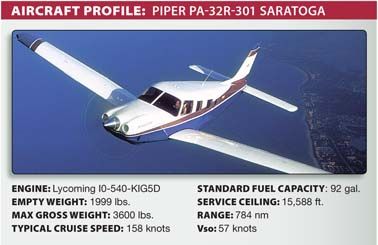By Joseph E. (Jeb) Burnside
Some of my most memorable flights involve night flying, both for good and bad reasons. On the good side, I recall breathtaking sunsets, full, orange moons on the horizon, distant lightning and flying down New York Citys East River after departing the now-closed Flushing Airport. On the bad side, I remember flogging a Skyhawk through a cold front into Asheville, N.C., shortly after getting my Instrument rating, plus getting nailed by a Hickory, N.C., used-car dealers spotlight in that same Skyhawk years later. And then there was the time … well, you get the idea.

While the airplane certainly does not know whether the sun is shining, the lack of light makes many things more difficult to do from the left seat of an airplane at night. Some things-like spotting well-lit traffic, airports and even transmission towers can be easier at night. But thats only true when the weathers good and Im flying VFR. When the weathers bad, its no contest: File and fly IFR on established airways or in a radar environment.
In fact, I recently completed a four-hour, headwind-laden jaunt from Virginia to Georgia at night. All of the trip was flown IFR after the sun set. Some of it was IMC, but all of it was at or above 4000 feet msl. Thats lower than I usually fly on a cross-country, but the winds werent cooperating with me-they rarely do-and by the time I descended to 4000 feet, I was well above any obstacles along my well-known route.
Even though Ive spent a smidgeon of time over both the Appalachian and Rocky mountains at night, its always been IFR, even though the weather may not have required it. The one thing I wont do is try to fly into deteriorating weather and mountains, at night, VFR and at low altitude.
Doing it IFR can involve more work than during the daytime. But, its often worth the effort. As we shall see, putting a little extra effort into nighttime flight planning and, especially, the weather well encounter, can make or break a safe arrival at our destination.
Background
On March 21, 2004, at about 2050 Eastern time, a Piper PA-32R-301 was destroyed when it impacted mountainous terrain near Harlan, Ky. The non-Instrument-rated Private pilot and five passengers were fatally injured.Instrument conditions prevailed near the accident site. The flight departed the Darlington County Jetport (UDG), Darlington, S.C., with the Blue Grass Airport (LEX), Lexington, Ky., as its intended destination.
Review of ATC communications and radar data revealed that the flight proceeded uneventfully and soon contacted the Tri-Cities Approach Control, requesting transition through the airspace, and descending from 10,000 feet to 4500 feet msl. After transitioning the airspace, ATC terminated services at about 2041. The last radar target return was recorded at 2048:43, with no altitude recorded. However, an altitude of 4500 feet was recorded on the previous radar target return, at 2148:24. The position of the last target return was approximately six miles southeast of the accident site, near the peak of Little Black Mountain.
Investigation
Before takeoff, the pilot received a standard weather briefing, which included an icing advisory for occasional moderate rime or mixed ice in clouds and precipitation below 7000 feet msl over Kentucky and Indiana. The briefing also included information about cloud cover north and west of the Appalachian Mountains. The cloud cover was described as solid broken-to-overcast with bases between 3000 to 4000 feet msl and tops at 6000 feet.
A weather observation at the Tri-Cities Regional Airport (TRI) at 2053 included visibility 10 miles and few clouds at 4700 feet agl. However, a Kentucky State Trooper observed heavy snowfall in the Harlan County area at the time of the accident, with possible accumulation of one inch in the mountainous areas. Additionally, the NEXRAD Weather Radar Imagery report for 2100 revealed light to medium intensity echoes for southeastern Kentucky.
All major components of the airplane were accounted for at the accident scene. The main wreckage was about 300 feet below the peak, on the southeast side of the mountain. The wreckage was oriented on about a 010-degree heading at approximately 3050 feet msl. The cockpit, and a large section of fuselage, were destroyed by fire. Flight control continuity was established from the vertical stabilator, the horizontal stabilator, and the horizontal stabilator trim to the mid-cabin area. The landing gear system indicated it was retracted at impact, as did the wing flap system. The propeller exhibited evidence of being under power.
Probable Cause
The National Transportation Safety Board determined the probable cause(s) of this accident to include the pilots improper decision to continue VFR flight into IMC conditions and his failure to maintain terrain clearance, which resulted in controlled flight into terrain. Factors were night, snow and a low ceiling. It doesnt get much more succinct than that.
Flying a perfectly good airplane into the side of a mountain is easy to do at night while trying to remain clear of a snow storm. The hard part is doing the extra work necessary to both understand the weather forecast and the terrain well be flying over. In fact, any time well be flying toward mountains, we must consider the terrain, even when in good VFR.
In this accident, the pilot was probably proceeding along a direct course from his departure airport to his destination. That course would take the Saratoga over some of the most rugged terrain east of the Mississippi River.Shifting that course several degrees to the south would have kept the flight out of the highest terrain, and probably away from the snow showers. Once further west, the Saratoga could have turned north toward its destination.
With the cloud tops forecast to be at 6000 feet, its unclear why the pilot chose to descend from his higher cruising altitude. Since we dont know the current or forecast conditions at LEX, its possible the pilot feared being caught on top of a cloud deck on arrival. And a VFR-only night flight over mountains and icing conditions would not be my first choice. But the choice to descend into hilly terrain and poor weather was the wrong one. Better to have landed at TRI and waited out the weather, and perhaps the night.
Also With This Article
“Avoiding Terrain At Night”




